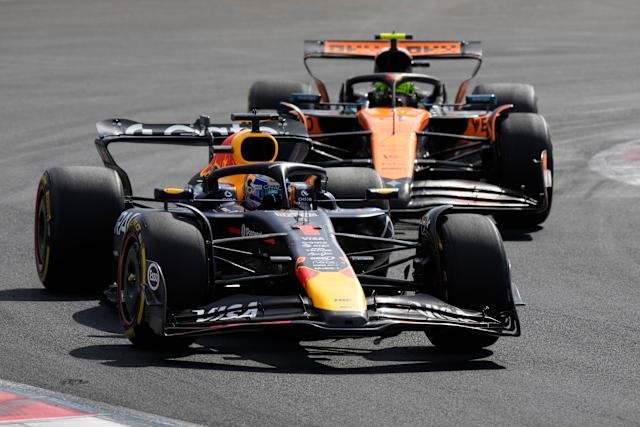Formula 1 reads like speed chess played with carbon fiber. Grids form, lights snap out, and a hundred tiny regulations shape what looks like pure chaos. Learn the structure and the sport stops feeling mysterious — every overtake, pit call, and penalty begins to make sense.
At first glance, rules seem to dart around like a street thimbles bet — cups moving fast while meaning hides underneath. Slow the shuffle and the basics appear: a weekend has a rhythm, the car obeys strict templates, and officials keep order with flags, stewards’ notes, and time penalties. With that map in mind, race broadcasts become legible stories rather than noise.
The Weekend Blueprint
- Friday Setup — Practice with Purpose
Two sessions invite data collection: tire wear, fuel loads, and aero tweaks. Parc fermé rules lock many settings after qualifying begins, so Friday is the sandbox; Saturday turns the sand into bricks. - Saturday Stakes — Knockout Qualifying
Q1, Q2, Q3 eliminate the slowest groups step by step. Lap times decide grid positions. Impeding, track limits, and unsafe releases can flip the order with stewards’ penalties. - Sunday Business — The Grand Prix
Lights out launches a distance target — usually around 305 km — with tire changes required if rain stays away. Safety cars compress gaps; virtual safety cars cap speed without bunching the field. - Sprint Variants — Short Race, Real Points
Selected rounds add a sprint dash. Separate parc fermé phases and fresh risk–reward maths mean early aggression with limited tire stress. - Points and Prizes — Consistency Wins
Top ten finishers score, fastest lap adds a bonus if the car ends in the points. Championships crown both drivers and constructors, rewarding speed and reliability across the season.
Cars, Tires, and How Pace Is Made
Regulations define the playground: power units with hybrid systems, minimum weights, and aero limits that sculpt how closely cars can follow. Ground-effect floors and simplified wings encourage clean air management, while budget caps push cleverness over brute spending. Tires set the clock. Three dry compounds arrive — soft, medium, hard — plus intermediates and full wets for rain. Each dry tire behaves like a promise with a bill attached: more grip means quicker degradation; harder rubber lasts longer but warms slowly. Strategy lives inside that trade.
Fuel cannot be added during the race. Energy harvesting under braking feeds batteries; deployment buttons push short bursts down straights. Brake-by-wire and differential maps alter corner behavior within legal boundaries. The car talks constantly — temperatures, pressures, lift-and-coast prompts — and the pit wall replies with pace targets and undercut plans. Mastery looks like serenity on camera because the math is humming elsewhere.
Stewards, Flags, and Fair Play
Race control communicates with color and code. Yellow means caution; double yellow means serious hazard; green restores racing. Blue tells a lapped car to let a leader through. Red stops everything. A safety car gathers the pack when recovery vehicles or debris demand low risk. A virtual safety car imposes a delta time — exceed it, expect a penalty. Track limits matter: all four wheels beyond the white line can erase a lap or invite time punishment. Jump starts, unsafe releases, weaving in defense, and forcing rivals off the track sit in a stewards’ toolbox with reprimands, five- or ten-second penalties, and drive-throughs. Consistency evolves with precedent, but the goal is simple: keep risk controlled and competition honest.
Strategy on the Clock
Pit windows orbit around tire life and traffic. An undercut pits early to gain pace on fresh rubber; an overcut stays out to exploit clean air. Safety-car timing can turn a losing plan into a podium leap. Teams also juggle cooling, brake wear, and engine mileage within seasonal allocations; a grid-drop penalty might be chosen intentionally when a new unit promises a strong comeback drive. Team orders exist, but modern broadcasts and sporting codes demand clarity — swapped positions require reasons, not whispers.
Watch Smart: Rookie-Friendly Habits
- Follow the Delta — Find the Hidden Battles
Intervals, sector colors, and tire ages reveal fights long before the cameras cut to them. A two-lap tire offset is often worth more than a DRS zone. - Learn the Language — Flags, Limits, Lifelines
Keep a quick reference: yellow equals caution, VSC equals pace cap, SC equals bunching, white lines define the track. Understanding those signals turns penalties from surprises into logic. - Pit Windows, Not Just Pit Stops
Watch for traffic after a stop. Rejoining behind a slow car burns fresh rubber; a textbook undercut fails if the out-lap meets congestion. - Tire Truth Over Position
A car on older hards defending from a car on fresh mediums is a story with a likely ending; patience plus DRS often beats a risky dive. - Weather as a Character
Intermediates thrive on damp lines; full wets need standing water. A drying track punishes early slicks until surface temps rise — timing is courage plus science.
Why the Sport Hooks New Fans
Underneath the noise sits structure: a weekend rhythm, a car that obeys tight rules, and human judgment steering risk. The puzzle rewards attention. After a few races, pit radios sound like chess notes, tire calls read like time management, and flags translate to plot turns. With a handful of concepts — parc fermé, track limits, deltas, compounds, safety cars — the broadcast becomes a novel rather than a highlight reel. From there, the fun is arguing strategy like a local, then waiting for the next green flag to prove the hunch right.
